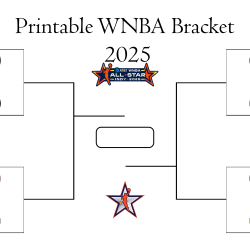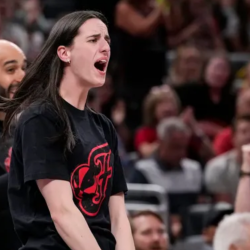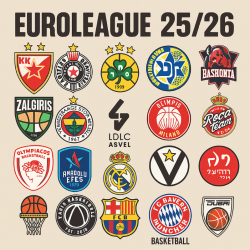The WNBA has come a long way since its inception in 1996. As the premier professional women’s basketball league in the United States, the WNBA has experienced several transformations in its history. One way of tracking the league’s evolution is by looking at the movements of the league’s franchises; including expansion, teams folding, relocation and rebranding.
How Many WNBA Teams Are There?
As of the 2023 WNBA season, there are a total of 12 WNBA teams in the league; six in the Western Conference and six in the Eastern Conference. This includes the following teams:
- Atlanta Dream
- Chicago Sky
- Connecticut Sun
- Dallas Wings
- Indiana Fever
- Las Vegas Aces
- Los Angeles Sparks
- Minnesota Lynx
- New York Liberty
- Phoenix Mercury
- Seattle Storm
- Washington Mystics
In terms of attendance, the most successful teams by far are the Seattle Storm, Phoenix Mercury and Las Vegas Aces each averaging over 8,700 attendees per game.
However, the number of active franchises in the history of the WNBA has fluctuated from a low of 8 teams during the league’s first year in 1997 to sixteen franchises from 2000-2003,
The ups and downs that WNBA franchises have experienced represent the struggle of a professional league that is trying to build support and create visibility to a sport that hasn’t always been respected from all corners. And no one team or region has been impervious to the . exploring the number of teams the league has had from its inaugural season until recent times, highlighting significant events along the way.

Inaugural Season (1997)
The WNBA debuted on June 21, 1997, with eight founding teams. These original franchises in alphabetical order included the
- Charlotte Sting
- Cleveland Rockers
- Houston Comets
- Los Angeles Sparks
- New York Liberty
- Phoenix Mercury
- Sacramento Monarchs
- Utah Starzz
These eight organizations formed the foundation for the NBA’s foray into women’s professional basketball in the United States. However new betting sites at the time predicted the WNBA would have some ups and downs and they were right. Only three of these founding franchises are still in existence today. Let’s look back at how the league’s landscape has shifted in the last couple decades.
Expansion Years (1998-2000)
The league witnessed its first expansion in 1998 when the Detroit Shock and Washington Mystics joined the WNBA. The following year, the Orlando Miracle and Minnesota Lynx were added as expansion teams in 1999, expanding the league to a total of 12 teams.
- Detroit Shock (1998)
- Washington Mystics (1998)
- Orlando Miracle (1999)
- Minnesota Lynx (1999)
- Indiana Fever (2000)
- Seattle Storm (2000)
- Miami Sol (2000)
- Portland Fire (2000)
- Chicago Sky (2006)
Then in 2000, the WNBA went big and added four more franchises: the Indiana Fever, Miami Sol and Seattle Storm, doubling the founding team number of eight. With 16 teams, the WNBA had the most teams the league has ever seen up at any point, but it was untenable as the league would lose many of these franchises in the coming years.
The WNBA expansion was more intentional and thoughtful about adding teams to their league. In 2006 the league welcomed the Chicago Sky then the Atlanta Dream in 2008. By the time the Sky played their first game, several franchises had already gone under.
WNBA Teams Folding
Despite the growth of the league during its early years, many WNBA teams faced financial challenges or struggled to garner sufficient fan support, resulting in teams closing operations while other franchises relocated.
It was clear the league had grown to quickly without a more-polished product as the Miami Sol and Portland Fire lasted just three seasons before folding in 2002.
The Cleveland Rockers ceased operations the following season and was the first founding WNBA team to fold.
| Team | Entered | Folded | Years |
|---|---|---|---|
| Charlotte Sting | 1997 | 2006 | 10 |
| Cleveland Rockers | 1997 | 2003 | 7 |
| Houston Comets | 1997 | 2008 | 12 |
| Miami Sol | 2000 | 2002 | 3 |
| Portland Fire | 2000 | 2002 | 3 |
| Sacramento Monarchs | 1997 | 2009 | 13 |
The Charlotte Sting would leave the WNBA when it was forced to shut down after the 2006 season.

A couple seasons later, something happened that no one saw coming (outside of those close to the organization) when the Houston Rockets folded due to the teams’ financial status and not being able to find another owner. This was a Houston team that won the first four WNBA championships behind legendary players Cynthia Cooper, Sheryl Swoopes, Tina Thompson, Janeth Arcain, and Kim Perrot. To the dismay of the league and basketball historians, the Comets would play their last game after the 2008 season.
Another WNBA championship team and founding franchise, the Sacramento Monarchs would fold the following year in 2009 just a few years after winning the WNBA championship in 2005.

WNBA Teams Relocated
Not every WNBA folded and closed up shop, there were several times that struggling WNBA teams re-located because another NBA owner was interested in taking over the franchise. Not unlike how the Los Angeles Lakers originated in Minneapolis, the Brooklyn Nets were the New Jersey Nets, and Memphis Grizzlies started out in Canada.
Here’s the history of WNBA teams that are still active today and where they originated.
| Team | Entered | Relocated | Years |
|---|---|---|---|
| Connecticut Sun | 2003 | N/A | 21 |
| – Orlando Miracle | 1999 | 2002 | 4 |
| Las Vegas Aces | 2018 | N/A | 6 |
| – San Antonio Silver Stars | 2003 | 2017 | 15 |
| —– Utah Starzz | 1997 | 2002 | 6 |
| Dallas Wings | 2016 | N/A | 8 |
| – Tulsa Shock | 2010 | 2015 | 6 |
| —– Detroit Shock | 1998 | 2009 | 12 |
Expansion team Orlando Miracle was the first time to re-locate. In 2003, the Miracle moved to Connecticut and became the Connecticut Sun who are still playing today.
The Utah Starzz relocated to San Antonio and became the San Antonio Silver Stars in 2003. They played for 15 seasons before rebranding as the Las Vegas Aces for the 2018 WNBA season.
The Dallas Wings were formed as a result of the relocation of the Tulsa Shock who started as WNBA champions Detroit Shock.
From its humble beginnings in 1997 with eight original teams, the WNBA has grown and evolved significantly over the years. Despite facing challenges such as team foldings and relocations, the league has persevered and expanded to its current roster of 12 teams. The WNBA remains an integral part of women’s professional sports, providing a platform for talented athletes to shine. As the league continues to flourish, capable and talented players are being left our. Now there are calls for the league to expand again, but the WNBA should certainly learn from their own (relatively) short history.





















